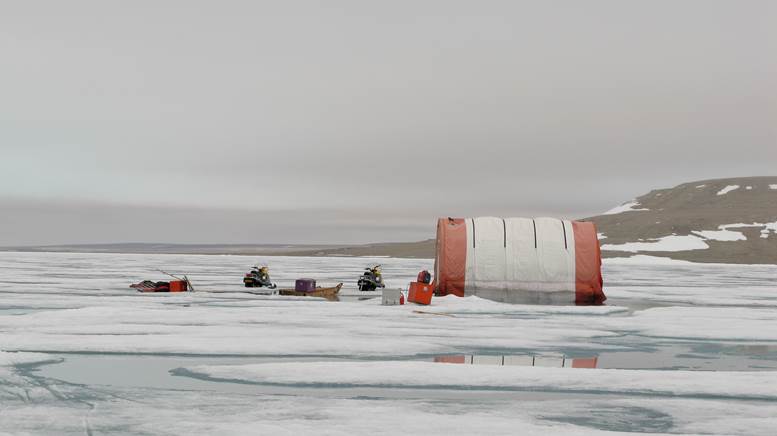Melt ponds aid CO2 sequestration from the atmosphere
A new study documents CO2 uptake in melt pond covered first year ice and estimate that these processes contribute with a carbon uptake of 10.4 Tg of C yr-1 in the Arctic.

In June 2012, we were sampling first-year sea ice in the Resolute Passage in Nunavut, Canada. Our objective was to examine how melting snow and sea ice could affect the CO2 exchange between the atmosphere, sea ice and the ocean. For this purpose, we collected sea ice, brine and seawater samples and we measured the air-ice CO2 fluxes.
During our month-survey, sea ice temperatures increased significantly and melt ponds started to form on June 10. Associated with the increase of the ice temperature, the bulk ice salinity decreased and the concentration in CO2 (pCO2) within the brine decreased as well. This change in pCO2 has been associated to the brine dilution by melting sea ice. Once the melt ponds formed and started to percolate through the ice matrix within the brine system, the brine pCO2 decreased drastically to very low concentration. As melt ponds are formed, initially, from melting snow, their salinity and pCO2 is really low. Therefore, their input into the brine system will enhance brine dilution and promote a strong decrease in the pCO2.
The air-ice CO2 fluxes measurements showed that, initially, sea ice acted as a sink for atmospheric CO2. This uptake became more significant as the melt ponds are formed at the surface of the ice. But as the melt ponds tend to reach the equilibrium with the atmosphere, their pCO2 increased and the uptake became less significant. However, as melt pond is continuously supplied by meltwater, their pCO2 remains below the atmospheric concentration and promoted a continuously but moderate uptake of CO2.
We extrapolated our finding to the whole Arctic seasonal sea ice and estimated an uptake of atmospheric CO2 of -10.4 Tg of C yr-1. This represents an additional uptake of CO2 that need to be further explored and considered in the estimation of the Arctic’s overall CO2 budget.
Further reading:
Geilfus, N.-X., Galley, R. J., Crabeck, O., Papakyriakou, T., Landy, J., Tison, J.-L., and Rysgaard, S.: Inorganic carbon dynamics of melt-pond-covered first-year sea ice in the Canadian Arctic, Biogeosciences, 12, 2047-2061, doi:10.5194/bg-12-2047-2015, 2015.
